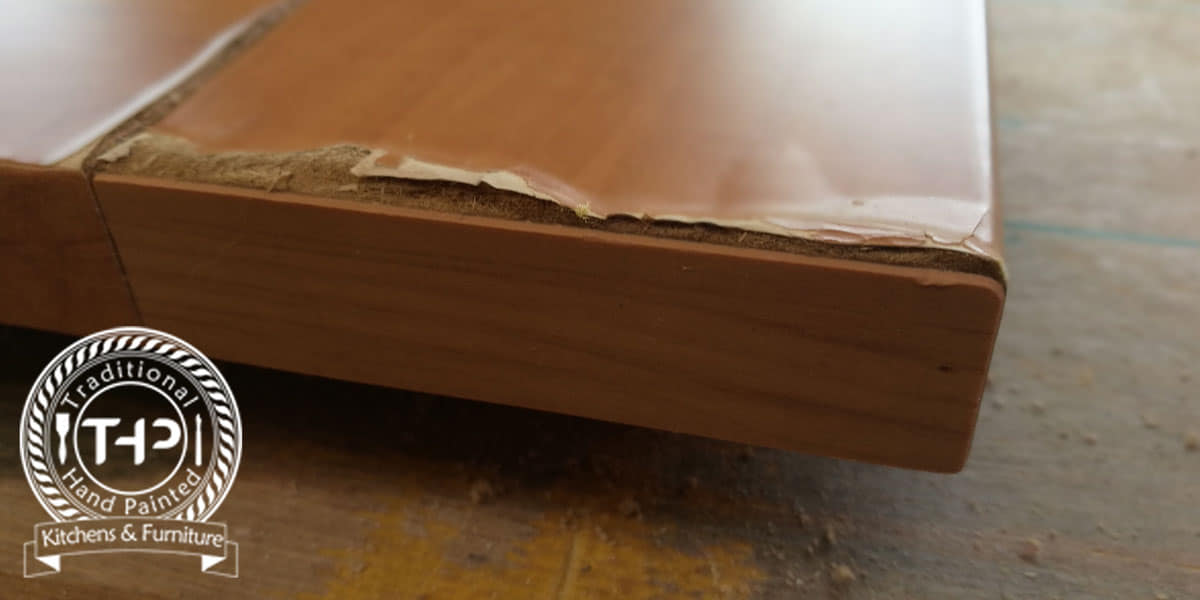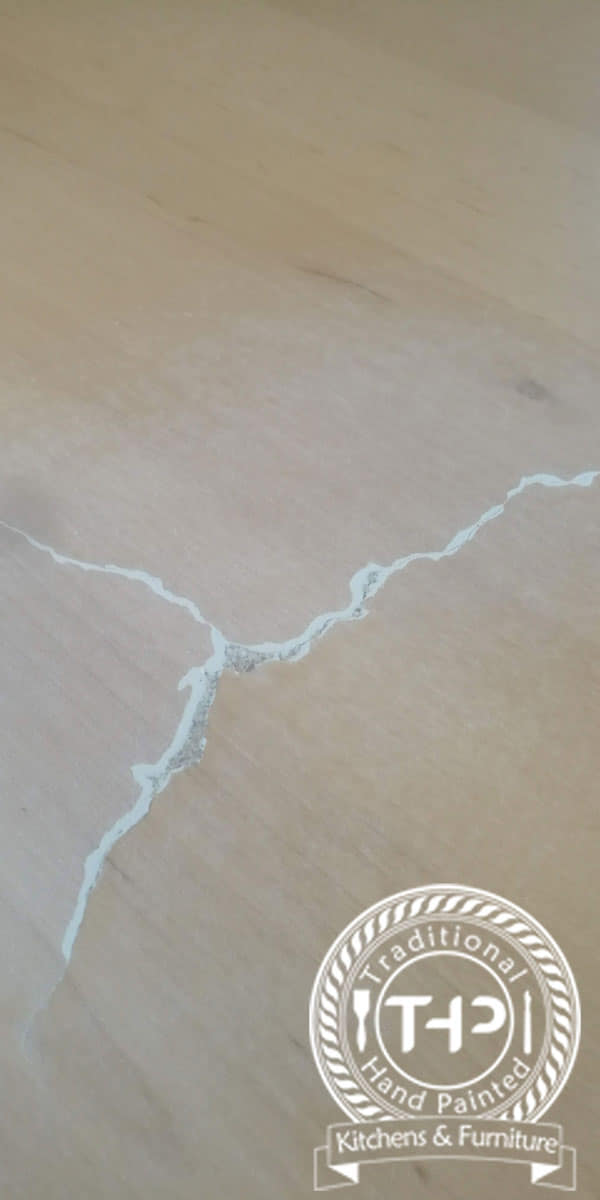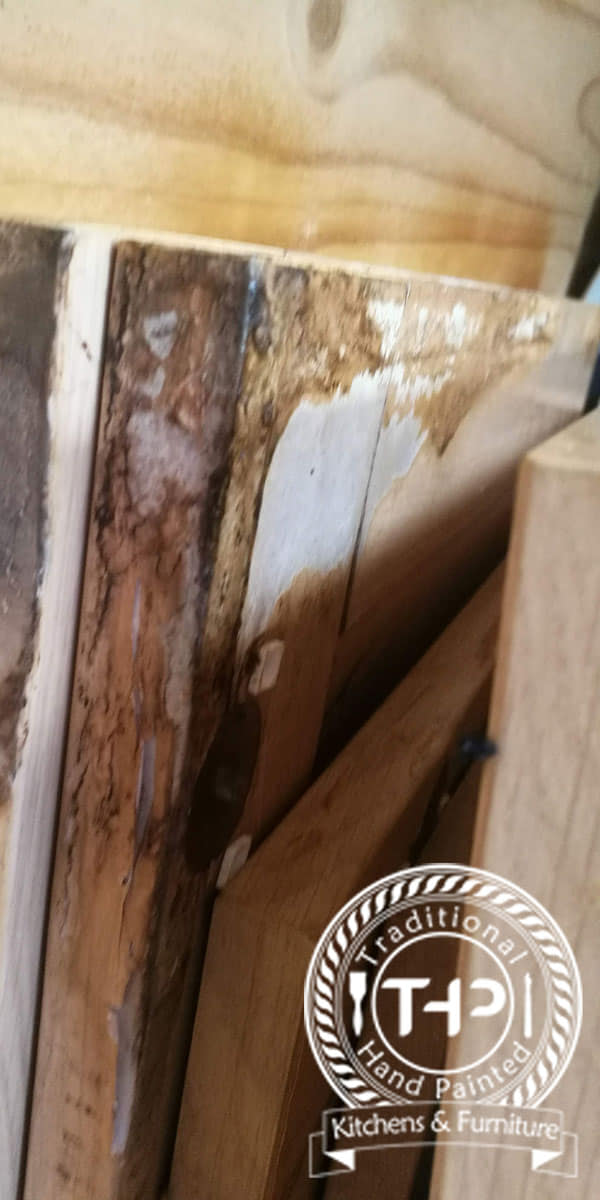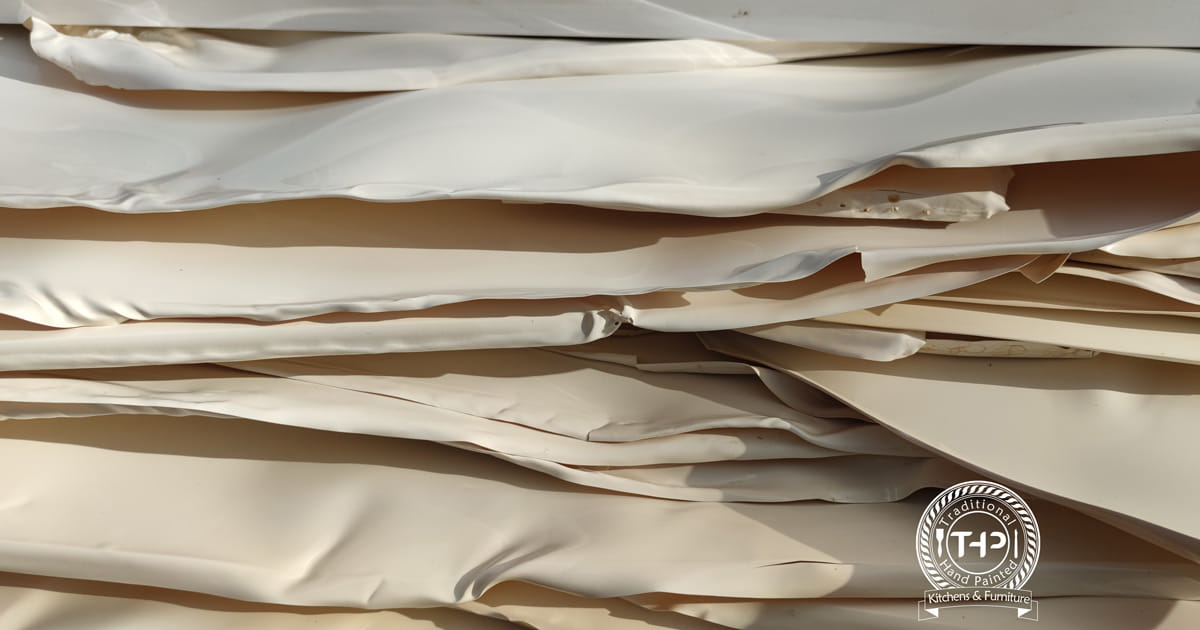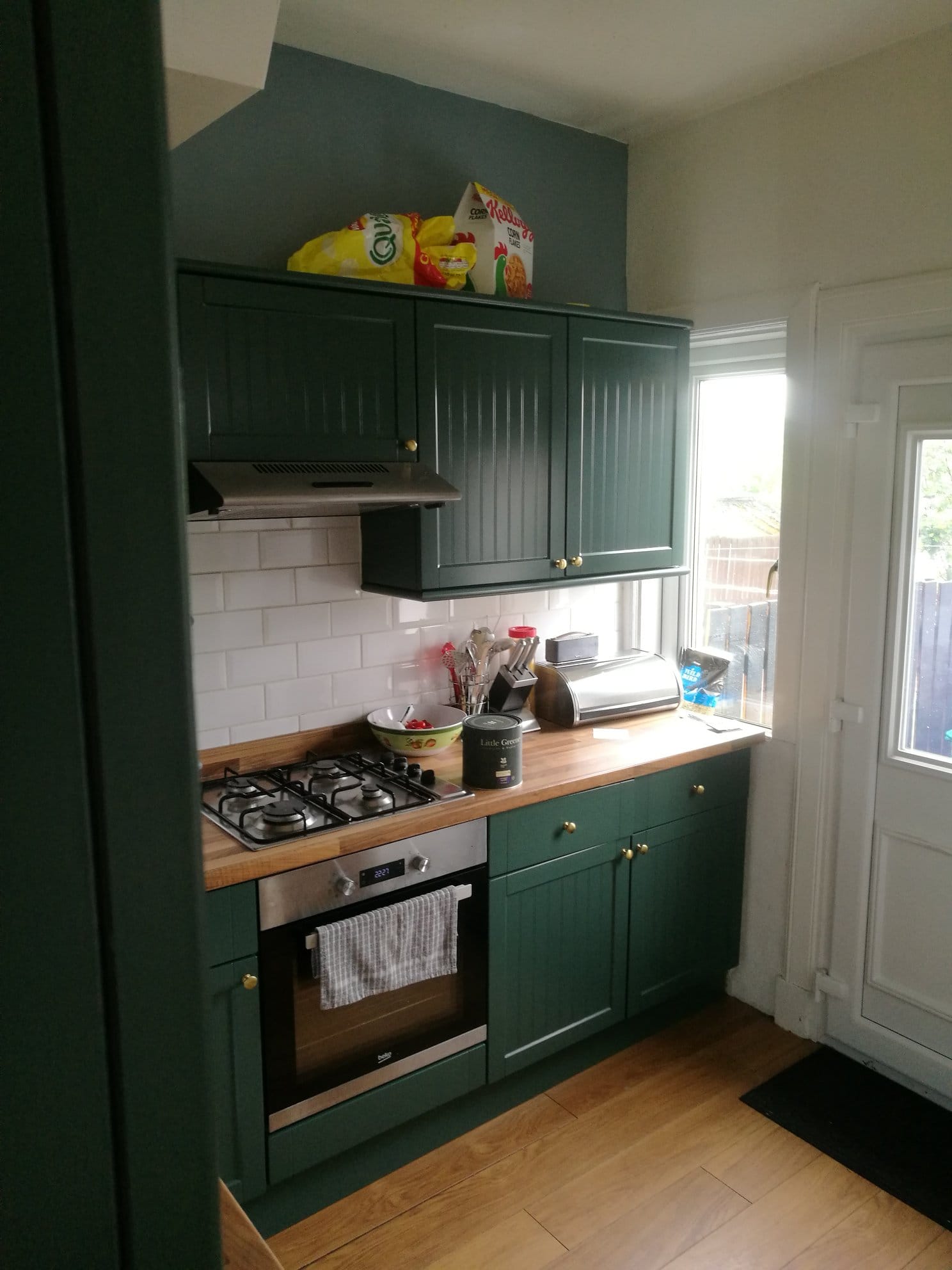Cop 26 and your kitchen
With COP-26 in Glasgow approaching i though it was time to look in to the Co2e impact of what I do, hand painting kitchens and how some of my clients decided to make the decision to rejuvenate their kitchens rather than replacing them with new.
Too many of us are persuaded that the only destination for our old used or drab kitchen cabinets and drawers is the skip, and what that means is the ecological tragedy of landfill, carbon emissions and a waste of your money.
In the past 3 years, over 22% of UK kitchens where refitted with the majority of the old cabinets and carcasses ripped out and dumped in landfill. The idea that you can recycle your kitchen is not the true picture as kitchen furniture wood is often treated, painted and glued which can contaminate the recycling process so it ends up in the landfill heap.
Taking a closer look at the Co2 effects of Kitchen replacement has been the focus of a EU wide report published in 2019 on the sustainability of the retail furniture industry. The report highlights the Co2 footprint of the standard units and materials used in kitchen cabinets and estimate that the average kitchen has a Co2 footprint of 500kg of Co2 (Carbon dioxide).
But what does that actually mean, 500kg of CO2e doesnt really mean a lot to me. Kitchens are designed to last a long time and ive had my kitchen for over 15 years and I have no plans to change it, other then painting it of course. So lets look at the average tree, its been estimated that this could consume about 43kg of Co2 over 1 year. Which would equate to about 11.5 years for my kitchen to become Carbon neutral with that 1 tree.
Looking at this in the context of the UK, this would mean 3.2 million kitchen renewed in 2019 would take the Co2e figure to 1600000000 (one billion, six hundred million) kg or 1.6 million tonnes of Co2e which would require 37 million tree's 11.5 years to absorb kitchens from just a single year. And this represents just 0.5% of the Uks total Co2e emissions which are estimated at 400 million tonnes.
Painting is not without its own carbon footprint as you would expect and this has been estimated at 2.6kg of CO2e per litre. This figure is made up with a number of factors including production of the raw ingredients that go in to paint. Pigments were by far the biggest factor, contributing 56% of the paint’s emissions. This is because they are very energy-intensive to produce: the impact of the extraction and processing of resources that go into making paint can be as much as 10 times higher than the impact of paint production.
Binders were another significant contributor to carbon emissions (9%) as they are based on fossil fuels and solvents contribute 3%. Transportation of finished products as well as recycling of waste paint and containers are also contributors to the overall Co2e footprint of paint.
My own views on the subject of Co2 emissions are mixed, this is a vastly complex subject and from researching I have begun to understand a little of the multitude of influencing factors. Co2 is not bad, the imbalance of Co2 is.
Over the past few years I've talked with clients to understand what's been the factors in their decision to have their kitchens repaired and painted rather then replacing them. As you would expect cost has been a significant factor as well as the inconvenience of the time to rip out and install of a new kitchen. But increasingly the environmental impact has become a factor with clients not willing to justify dumping a perfectly good kitchen that can be professionally refurbished to look like a brand new and colourful kitchen that will last indefinitely.
To conclude, would you rather have a new kitchen or this old earth? Ya you really did just read that ridiculous sentence. Id like to think we can find a balance between old and new. Some kitchens cant be repaired and painted to look like new, but most can, cracks, dents and scratches can all be completely repaired to look like new and correctly prepared and painted your old kitchen can look like a showroom kitchen once again.
Some abbriviations and notes.
Co2e (carbon dioxide equivalent or CO2 equivalent, abbreviated as CO2-eq is a metric measure used
to compare the emissions from various greenhouse gases on the basis of their global-warming
potential (GWP), by converting amounts of other gases to the equivalent amount of carbon dioxide
with the same global warming potential.)
Greenhouse gases act like a blanket, trapping the sun’s warmth near the earth’s surface, and affecting the planet’s climate system.
How trees and plants manage to absorb carbon dioxide is via photosynthesis. In this clever process, every tree absorbs carbon dioxide through its leaves and converts it into sugars that it can use to grow. And over time, as the tree grows it locks away the carbon it’s absorbed from the atmosphere in its branches, trunk and roots - so that it’s no longer contributing to global warming.
Some References
https://www.kandbnews.co.uk/.../kitchen-furniture.../
https://www.theguardian.com/.../co2e-global-warming...
https://granthaminstitute.com/.../carbon-dioxide-the.../
https://www.statista.com/.../kitchen-and-fitted-kitchen.../
https://www.ovoenergy.com/.../trees-natures-carbon-eating...
https://www.carbonpirates.com/.../how-much-carbon-do.../
https://www.nasa.gov/.../land-ecosystems-are-becoming...






